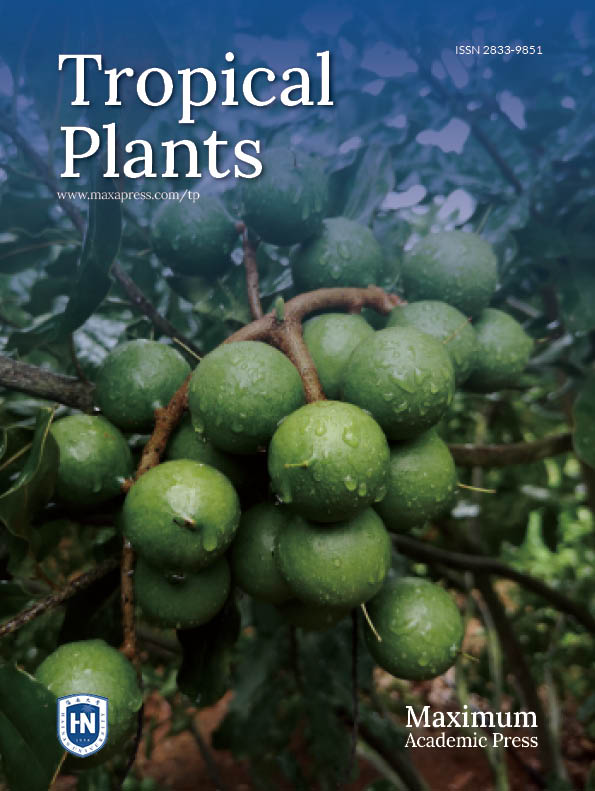Important Notice
This is accepted manuscript by the journal but prior to copy-editing or proofing. It can be cited using the author(s), article title, journal title, year of online publication, and DOI. It will be replaced by the final typeset version, which may therefore contain changes. The DOI will be remain the same.
Construction and application of virus-induced gene silencing system in taro
-
Yanling Gui#,
-
Bicong Li#,
-
Qianglong Zhu,
-
Yining He,
-
Yufeng Zhang,
-
Jiarui Cui,
-
Rao Pan,
-
Yingjin Huang, ,
-
Qinghong Zhou, &
-
Yao Xiao,
-
1.
Jiangxi Province Key Laboratory of Vegetable Cultivation and Utilization (Jiangxi Agricultural University), Nanchang, 330045, China
# Authors contributed equally: Yanling Gui, Bicong Li
More Information
-
Received Date:
25 March 2024
Accepted Date:
07 June 2024
First-online Date:
17 June 2024
Tropical Plants
Article in press
(2024)
|
Cite this article
-
Highlights
CePDS was used as indictor gene to constructed VIGS system in taro.
CePDS was used as indictor gene to constructed VIGS system in taro.
CeTCP14 was selected to further verify the robustness of this system.
-
Abstract
Virus-induced gene silencing (VIGS) technique is an important means for rapid identification of plant gene function, and a stable VIGS system in taro can lay a technical support for rapid and efficient gene function verification. We constructed VIGS system with tobacco rattle virus (TRV)-based vector, and phytoene desaturase (CePDS) as indicator gene, then silence CeTCP14 to further verify the robustness of this system. First, we used Ganyu No.1 as material to constructing taro VIGS system by leaf injection method with CePDS at OD600 = 0.6, and the silencing plant rate was 12.23%, the expression level of CePDS was about 59.34%−77.18% compared to the control, and the chlorophyll content decreased 37.80%−56.11% in CePDS silencing plants. The silencing plant rate increased significantly by leaf injection at OD600 = 1.0, reached to 27.77%, but there was no significant difference in silencing plant rate between leaf injection method and bulb vacuum treatment. We further silenced CeTCP14 with bacteria solution OD600 = 1.0 and bulb vacuum treatment in Ganyu No.2, the silencing plant rate was 20%, and the expression level of CeTCP14 was 43.94%−63.34% of the control. Meanwhile, the starch content in the corms decreased significantly to 70.88%−80.61% compared to the control. In conclusion, the results indicated that TRV-based VIGS system is effective in taro. The concentration of bacterial solution is a key factor affecting VIGS system, CeTCP14 can affect starch accumulation in taro bulbs. The robust VIGS system establishment in taro could lay a good foundation for the subsequent rapid gene function verification.
-
Rights and permissions
Copyright: © 2024 by the author(s). Published by Maximum Academic Press on behalf of Hainan University. This article is an open access article distributed under Creative Commons Attribution License (CC BY 4.0), visit https://creativecommons.org/licenses/by/4.0/.
-
About this article
Cite this article
Gui Y, Li B, Zhu Q, He Y, Zhang Y, et al. 2024. Construction and application of virus-induced gene silencing system in taro. Tropical Plants doi: 10.48130/tp-0024-0025
|
Gui Y, Li B, Zhu Q, He Y, Zhang Y, et al. 2024. Construction and application of virus-induced gene silencing system in taro. Tropical Plants doi: 10.48130/tp-0024-0025
|















